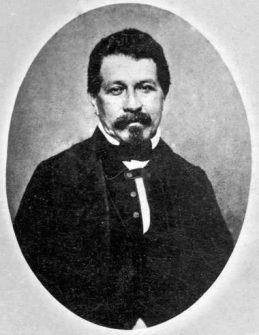Colombia. The difficult change.

The new progressive executive is the spokesperson of ‘los nadies’, the marginalized, the “nobodies”, including Afro-Colombians. Many reforms are designed to create greater social justice. But they clash with a parliament in the hands of the opposition.
After more than two hundred years of republican history characterized by political violence and conservative and oligarchic governments, Colombia has for the first time a progressive government, led by President Gustavo Petro, a former guerrilla fighter of the M-19 Movement.This rebel group was the one that in the late 1980s chose to negotiate the end of the armed struggle in exchange for a Constituent Assembly from which the current Constitution was born in 1991.

President Gustavo Petro. Photo: Pres Office.
On that occasion, the former guerrilla fighters elected to draft the new Fundamental Charter, in addition to having a relative majority, were the spokespersons of the Afro-descendant communities, because no “ethnic” delegate managed to be elected.
Although the Afro-Colombian population has historically fluctuated between 10 and 20% of the total (between 4 and 10 million people), the state has systematically denied the cultural and socio-economic value of the African heritage in the construction of the nation, often inspired by European colonialist and mixed-race ideologies that have systematically ended up overshadowing the recognition of the contributions of the African population.
Nieto and that failed portrait
The case of the only Afro-Colombian head of state in the history of the country, José Nieto (1861), was emblematic. His image was censored for decades from the presidential palace of “Nariño”, in Bogotá, in the hall of portraits of the presidents of the republic. It was only in 2018 that the then-president, Juan Manuel Santos, had Nieto’s portrait added.
The current government finds itself with the enormous responsibility of finally being the spokesperson of los nadies (“nobodies”).

Juan José Nieto Gil, the first president of African descent in Colombia, 1861. Archive
They represent the majority of the Latin American population, the marginalized, forgotten or exploited by the state and capital, fuelled by large estates and the primary and extractive industry. Eduardo Galeano masterfully described it in The Open Veins of Latin America. It was the current vice president of the republic and minister of equality, Francia Márquez, herself of African descent, who revived the idea on August 6, 2022, at the end of the electoral campaign and immediately after the electoral triumph: “After 214 years we have a government of the people, those with calloused hands—the government of the common people, of los nadies of Colombia (…). We are going for the rights of our Mother Earth, of the Great Home (…). We are going together to eradicate structural racism.”
Socio-economic indicators
According to socio-economic indicators, between 2021 and 2022, los nadies represented 36% of the population living below the extreme poverty line (less than 2.5 dollars a day), 60% of workers without a formal contract and more than 8 million people registered as victims of the armed civil conflict. According to the report of the United Nations Economic Commission for Latin America and the Caribbean (Epal, 2020), 40.8% of the Afro-Colombian population lives in poverty.
In this sense, the expansionary fiscal policy of the current government aims to reduce this unequal gap between the various segments of the population. It is no coincidence that the current executive has among its ministers, in addition to Francia Márquez – an Afro-Pacific woman, social leader and former Goldman Prize winner in 2018 (the Nobel Prize for environmental protection) -, also other people of African descent, such as Luis Gilberto Murillo for Foreign Affairs and Yesenia Olaya for Science, Technology and Innovation. Then there are the former ministers of Education, Aurora Vergara, and Sports, Maria Isabel Urrutia. The desire for a radical change in social justice policies is running aground, however, in a continual clash between the government and Congress.

About 40.8% of the Afro-Colombian population lives in poverty. File swm
The legislative power has a consistent majority in favour of the opposition, reluctant to support the profound reforms, especially in the health and agricultural sectors (redistribution of abandoned lands and purchase of large estates by the government).
Despite the adverse path, after two years the executive has managed to approve a tax reform, on average progressive, and that of pensions. The latter, although it is being examined by the Constitutional Court, will offer a universal allowance of about 55 dollars a month, compared to the current 19, to 2.5 million people who have not paid contributions. A policy aimed at expanding the recognition of peasant communities, often composed of Afro-descendants and indigenous people. In addition, specific allocations of about 12.5 million dollars have been approved for rural infrastructure on both coasts of the Pacific and the Caribbean, in municipalities and territories of African descent. Even in the educational sector, maintaining the “zero enrolment” for public universities has broadened the basis for access to higher education.
The debate on the reform is not yet over, as there is on the table a possible massive intervention of public investments in new educational structures that can effectively guarantee access to new students in a country where there is still a limited number of places for all degree courses and compulsory attendance.

Cartagena. Student with paperwork. There will be a possible massive intervention of public investments in new educational structures. Kadettmann/123rf
As for research, development and innovation initiatives, although the corresponding ministry is last in terms of available resources, the initiatives for funding doctoral scholarships and research grants are directed towards projects in favour of historically disadvantaged populations, including African-descendants. Approximately 26 million dollars have thus been allocated to topics of interest to the communities mentioned, involving researchers belonging to the same.
The path of deep reforms, however, remains complex not only because Congress is opposed to the executive’s proposals, but also because of the obstacles that the Constitutional Court has placed in the collection of new taxes related to the non-deduction of royalties that companies in the primary sector should have paid to the state.
Finally, the attempts at reform are complicated by the decline in collections by the Revenue Agency and the desire to gradually eliminate the fuel subsidy. These factors resulted in a total deficit of about $4.9 billion, or about 50% of what the government expected to collect after the last tax reform in 2022. (Photo: Women wearing traditional costumes sell fruits in the centre of Cartagena. 123rf)
J.A.T & D.R.



